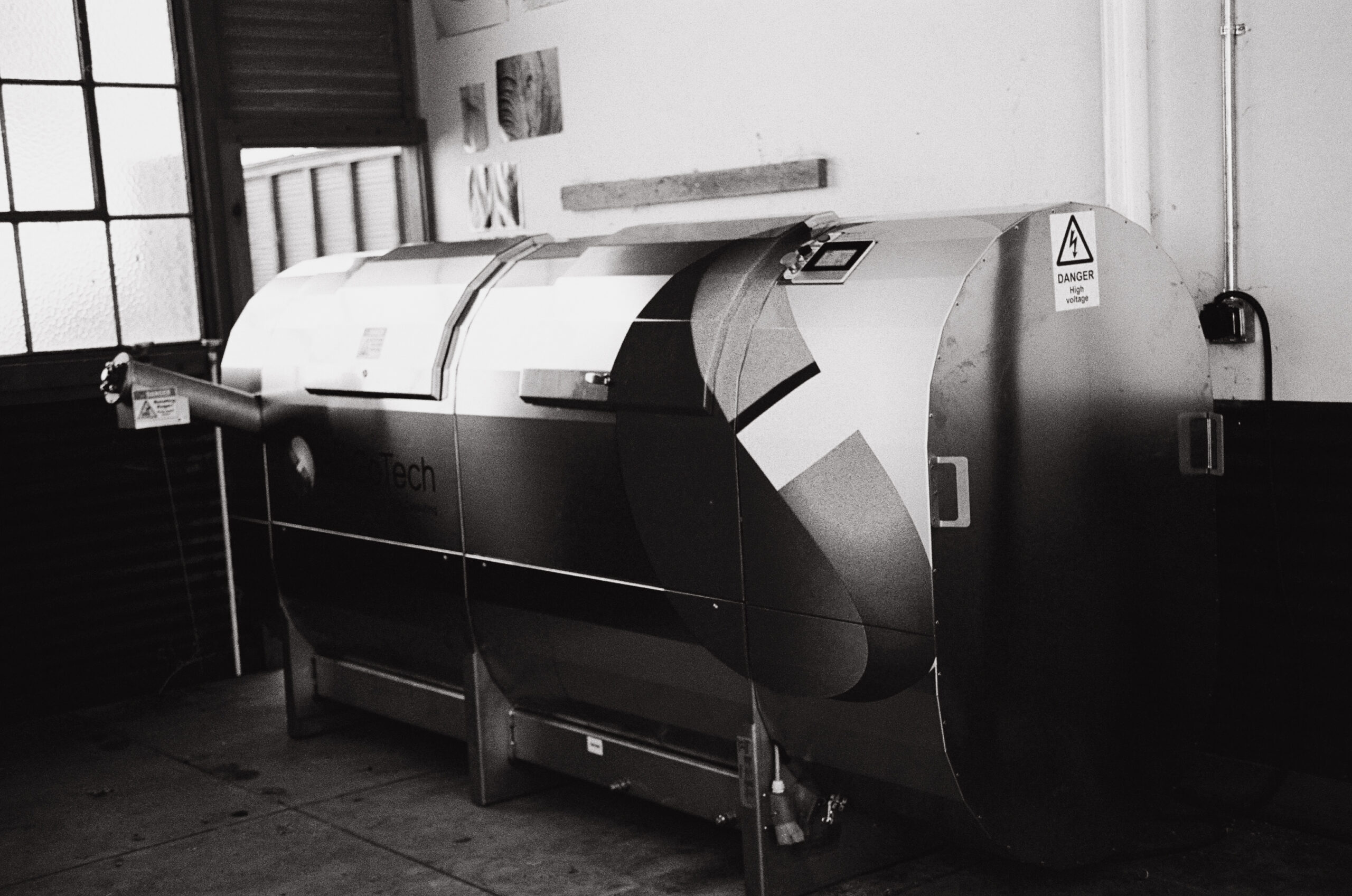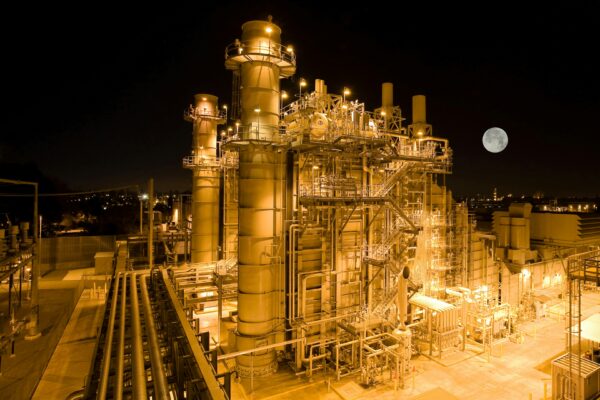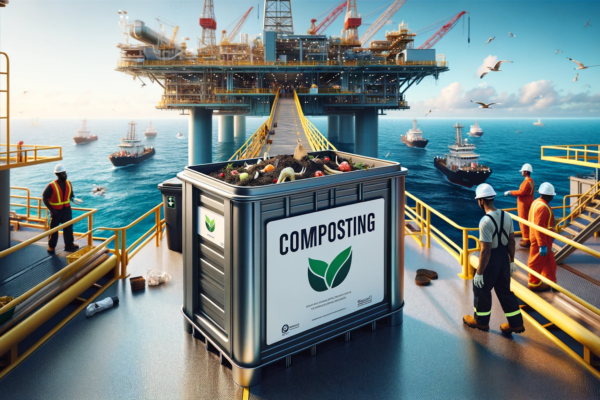Mastering In-Vessel Composting: A Professional’s Guide to Black Gold
Mastering In-Vessel Composting: A Professional’s Guide to Black Gold
Embarking on a journey towards enhancing environmental sustainability, in-vessel composting presents itself as a pivotal initiative. This comprehensive guide aims to elucidate the intricacies of in-vessel composting, offering expert insights and strategic advice to navigate this eco-conscious endeavor. By integrating financial feasibility analyses and real-world examples, we endeavor to equip stakeholders with the knowledge and tools necessary to implement this sustainable practice effectively. Join us as we delve into this green innovation, fostering a more sustainable future together.
Unveiling In-Vessel Composting
Imagine transforming organic waste into a treasure trove of nutrients with the efficiency of a high-tech system. That’s the magic of in-vessel composting. It’s akin to having a sophisticated robot that takes kitchen scraps, yard debris, and even some paper products, then diligently works to convert them into rich, life-giving soil. It’s composting, but with a modern twist.
(BioSpeed M2 by BioCoTech Americas)
Why It’s a Game-Changer
The initial encounter with an in-vessel composting system marks a significant paradigm shift, transcending mere memorability to become a transformative experience. Envision a scenario where, against the backdrop of a bustling urban farm that vibrates with the energy of city life, a state-of-the-art in-vessel composting unit operates with remarkable efficiency and discretion. This apparatus is not merely a piece of technology; it stands as a symbol of environmental stewardship, adeptly processing substantial volumes of organic waste, thereby mitigating the risk of landfill overflow. It exemplifies the seamless integration of technological innovation with natural processes.
In-vessel composting transcends the conventional boundaries of waste management strategies, heralding a revolutionary approach that fundamentally alters our interaction with waste. This method transforms organic materials—often regarded as inconvenient byproducts, including food scraps, yard debris, and agricultural remnants—into valuable, nutrient-rich compost. This transformation challenges the prevailing narrative that views organic waste as a liability rather than a resource. The resultant compost, teeming with nutrients, serves as a powerful soil enhancer, improving soil structure, fertility, and moisture retention, starkly contrasting with traditional disposal methods that fail to recognize the intrinsic value of organic waste.
Furthermore, in-vessel composting systems are meticulously engineered to function within a controlled environment, enabling precise management of the composting process. Through the regulation of critical parameters such as temperature, oxygen levels, and humidity, these systems expedite the decomposition process, yielding compost in significantly less time compared to traditional open-air composting methods. This efficiency is especially vital in urban contexts, where space is a scarce commodity and the environmental ramifications of waste disposal are increasingly pressing concerns.
Navigating the Regulatory Maze
Navigating the complex landscape of regulations governing composting practices, especially in the context of organic waste diversion laws, can indeed seem daunting. Across the globe, jurisdictions are increasingly implementing stringent regulations aimed at reducing landfill use and promoting sustainable waste management practices. For instance, in the United States, states like California have enacted legislation such as SB 1383, which requires businesses and residential households to divert organic waste away from landfills, aiming for a 75% reduction in organic waste disposal by 2025. Similarly, in Europe, the European Union’s Landfill Directive (1999/31/EC) sets targets for reducing biodegradable municipal waste sent to landfills, pushing member states to adopt organic waste recycling and composting as key strategies.
Each region, state, or country has its own set of rules, often with specific targets, timelines, and compliance mechanisms. For example, Vermont’s Universal Recycling Law (Act 148) bans all food scraps from landfills as of July 1, 2020, requiring residents and businesses to compost or manage food waste through other approved methods. On the other hand, cities like San Francisco have local ordinances mandating composting and recycling,

with the city providing curbside collection services for organic waste to facilitate compliance.
To successfully navigate this regulatory maze, it’s crucial to conduct thorough research into the specific requirements applicable in your area. Engaging with local environmental agencies or waste management authorities can provide valuable guidance and resources. Many regions offer workshops, online resources, and advisory services to help businesses and individuals understand their obligations under organic waste diversion laws. Compliance is not just about avoiding penalties; it’s a step towards more sustainable operations and contributes to broader environmental goals such as reducing greenhouse gas emissions and promoting soil health through the use of compost.
Refed is a great resource for all things legislation.
The Heart of the System: Technologies and Techniques
In-vessel composting systems come in various shapes and sizes, each with unique features. From rotating drums to static aerated piles, the options can be overwhelming. Visiting several facilities, each using a different system, can be an eye-opening experience. The advice here is to consider space, volume of waste, and specific needs before making a decision. It’s akin to choosing a new smartphone – what works best for one might not be the best fit for another.
The Environmental Impact: A Closer Look
When delving into the environmental impact of in-vessel composting, it’s essential to address the valid concerns surrounding potential health risks and the broader ecological footprint. With meticulous management and strict adherence to established best practices, in-vessel composting emerges not only as a safe method but also as one that confers significant environmental benefits. A key aspect of maintaining such a balance involves ensuring that the composting system is adequately aerated, which effectively mitigates common issues like unpleasant odors—a frequent worry for those new to the process.
Mitigating Health Risks through PFRP
A critical component of safe and effective in-vessel composting is compliance with the Environmental Protection Agency’s (EPA) standards, particularly those concerning the Process to Further Reduce Pathogens (PFRP). The PFRP is a set of criteria established by the EPA to ensure that compost produced through in-vessel systems is free from harmful pathogens that could pose health risks to humans, animals, and plants. These standards are part of the 40 CFR Part 503 regulations, which govern the use and disposal of sewage sludge, including biosolids that are often processed through composting.
The PFRP standards specify that compost must be subjected to a combination of temperatures and durations sufficient to significantly reduce the presence of pathogens. For in-vessel composting, this typically means maintaining the composting material at a minimum temperature of 55°C (131°F) for at least three days. This elevated temperature must be uniform throughout the composting mass, ensuring that even the most temperature-resistant pathogens are effectively neutralized.
Environmental Benefits and Best Practices
Beyond pathogen reduction, in-vessel composting offers numerous environmental benefits that align with sustainable waste management goals. By diverting organic waste from landfills, in-vessel composting reduces methane emissions—a potent greenhouse gas—thus contributing to climate change mitigation efforts. Additionally, the compost produced enriches soil health, reducing the need for chemical fertilizers and promoting more sustainable agricultural practices.
To maximize these environmental benefits while minimizing potential risks, operators of in-vessel composting systems must implement several best practices, including:
- Regular Monitoring: Continuous monitoring of temperature, moisture, and oxygen levels within the composting vessel is crucial to ensure that the process meets PFRP requirements and that the composting environment remains optimal for pathogen reduction and material decomposition.
- Feedstock Control: Careful selection and preparation of the organic waste materials entering the composting system can prevent the introduction of contaminants and ensure a balanced carbon-to-nitrogen ratio, facilitating efficient composting.
- System Maintenance: Routine inspections and maintenance of the in-vessel composting system help prevent mechanical failures that could disrupt the composting process and lead to environmental compliance issues.
- End-product Testing: Regular testing of the finished compost for pathogens, heavy metals, and other contaminants ensures that the product is safe for use and meets all relevant EPA standards and guidelines.
By embracing these practices and adhering to EPA standards, particularly the PFRP considerations, in-vessel composting can be conducted in a manner that is not only environmentally responsible but also conducive to public health and safety. This careful balance underscores the role of in-vessel composting as a key component of sustainable waste management strategies, capable of transforming organic waste into a valuable resource while mitigating its potential environmental impacts.
Building Community Connections
Beyond the classroom, in-vessel composting initiatives can galvanize entire communities. Community gardens, local farms, and urban green spaces that adopt these systems often hold workshops and open days, inviting residents to learn about the benefits of composting. These events serve as platforms for sharing knowledge, exchanging ideas, and fostering a collective environmental ethos. Participants leave not just with a deeper understanding of composting but with a sense of belonging to a community that values sustainability.
 Encouraging Collaborative Efforts
Encouraging Collaborative Efforts
The implementation of in-vessel composting systems can also inspire collaborative efforts between different community sectors. Businesses, for instance, can partner with local schools or community gardens to provide organic waste for composting projects. In return, they receive compost for landscaping or corporate green spaces, closing the loop in a mutually beneficial cycle. These partnerships highlight the interconnectedness of community members and their shared responsibility toward environmental stewardship. On the right is a picture of the waste management team at the Auraria Sustainable Campus Program with a BioSpeed M4.
Promoting Environmental Stewardship
Ultimately, the integration of in-vessel composting into community and educational settings cultivates a culture of environmental stewardship. It teaches the value of resources often taken for granted and discarded. By understanding the impact of waste and learning to view it as a resource rather than refuse, individuals are empowered to make more sustainable choices in their daily lives. This shift in perspective is crucial for fostering long-term environmental responsibility and care for the planet.
Best Practices for In-Vessel Composting
- Monitor and Control Environmental Conditions: The success of in-vessel composting largely depends on maintaining optimal conditions within the composting vessel. Regularly monitor and adjust temperature, moisture levels, and aeration to ensure the composting process proceeds efficiently. Ideal conditions include maintaining temperatures between 55°C to 65°C (131°F to 149°F) for pathogen reduction and adjusting moisture content to around 50-60% for optimal microbial activity.
- Balance the Carbon-to-Nitrogen Ratio: Achieving the right balance between carbon-rich “browns” (such as wood chips, dry leaves) and nitrogen-rich “greens” (such as food scraps, and green plant material) is crucial. A general guideline is to aim for a carbon-to-nitrogen ratio of about 30:1. This balance supports microbial growth and decomposition while minimizing odors and accelerating the composting process.
- Ensure Proper Feedstock Preparation: Before adding organic waste to the composting machine, it’s important to prepare the feedstock properly. This includes removing contaminants (like plastics and metals), and chopping or shredding larger items to increase the surface area for microbes to work on. Proper preparation enhances decomposition efficiency and prevents equipment malfunctions.
- Perform Regular Maintenance and Cleaning: Like any mechanical system, in-vessel composting machines require regular maintenance to operate smoothly. Follow the manufacturer’s guidelines for servicing and inspecting the machine to prevent breakdowns. Cleaning the system regularly also prevents the buildup of materials that could hinder aeration or moisture control.
- Track and Adjust Based on Compost Quality: Continuously assess the quality of the compost being produced and adjust operational parameters as needed. Factors to consider include the compost’s maturity, nutrient content, and any presence of pathogens or contaminants. Use feedback from these assessments to fine-tune the composting process, such as adjusting feedstock ratios, environmental conditions, or processing times.
Breaking Down the Jargon
The technical jargon of in-vessel composting can feel like learning a new language. But it doesn’t have to be that way. By simplifying complex concepts and using relatable analogies, in-vessel composting becomes accessible to everyone. After all, sustainability is a collective journey, and the more knowledge is shared, the better.
Staying Ahead: Embracing Innovation
The world of in-vessel composting is ever-evolving, with new technologies and innovations emerging regularly. Keeping abreast of these developments can enhance composting practices and environmental impact. It’s like being a surfer; staying ahead of the wave ensures the best ride.
Interactive Learning
One of the most rewarding aspects of the journey into in-vessel composting is engaging with others interested in the topic. Whether through workshops, online forums, or social media, creating spaces for interactive learning enriches the experience for everyone involved. It’s a reminder that in the realm of sustainability, everyone is both a student and a teacher.
Wrapping It Up: The Path Forward
In-vessel composting is more than just a waste management solution; it’s a step towards a more sustainable and connected world. Whether one is a business looking to reduce their environmental footprint, a community leader seeking to engage neighbors, or simply an individual curious about green practices, in-vessel composting offers a path worth exploring.



 Encouraging Collaborative Efforts
Encouraging Collaborative Efforts
